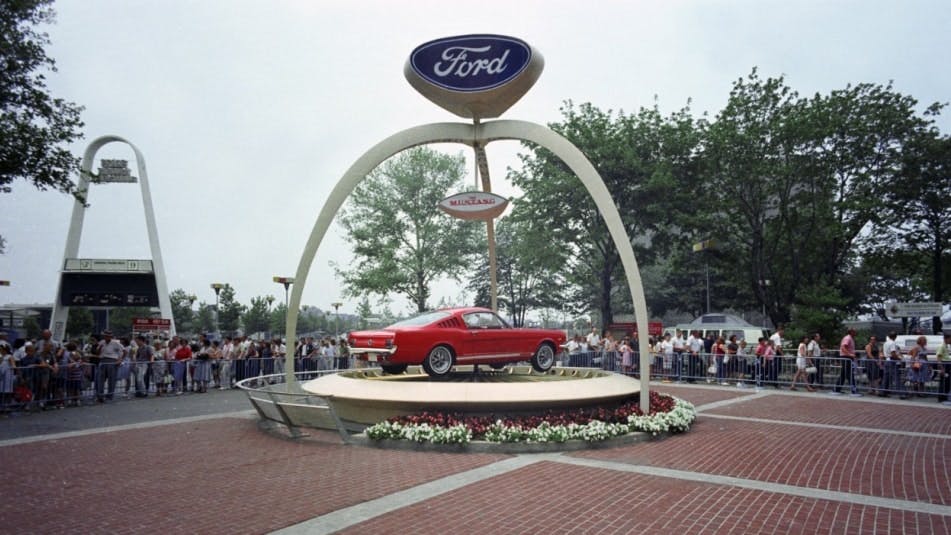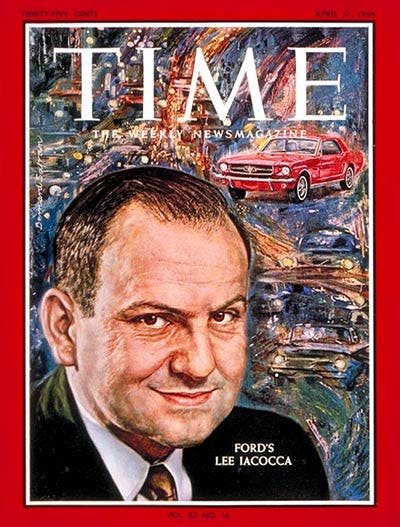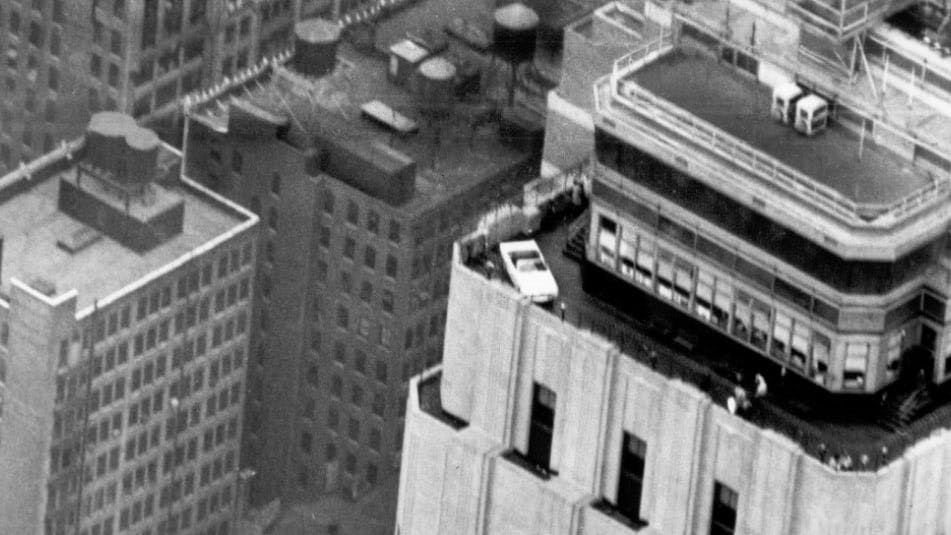The Early Mustang’s Media Stampede
April 17 marks sixty years since the Ford Mustang’s public debut at the 1964 New York World’s Fair. The original pony car immediately became a pop-culture and automotive phenom, and it remains one of the most impactful cars in history. We’re celebrating with stories of the events surrounding the Mustang’s launch, the history of the early cars, and tales from owners. Click here to follow along with our multi-week 60 Years of Mustang coverage. —Ed.
Those of us who weren’t around when the Ford Mustang was launched in 1964 can’t quite imagine a vehicle making such a splash. Sure, the Tesla Cybertruck got people talking, but when the Mustang was unveiled, nobody thought Ford was trying a late April Fool’s Day prank. Ford prepared a media blitz and produced its own content, but the Mustang garnered attention from media of all kinds, and it seems that it was impossible to miss the buzz of the new breed of car from Ford Motor Company. Here are several examples of Ford creating buzz and earning some freebies along the way.
On Television
Prior to its reveal, Ford flooded the airwaves with commercials that gave a glimpse of the Mustang’s back seat, grille emblem, and trunk. This commercial surely had prospective buyers and car fans in general as close as they could get to their TVs to make out any details of the fully uncovered Mustang marooned on a tiny island.
That was one of a dozen or more commercials Ford planned before and after the April 17 public reveal. Back when you had to get up to change the channel and there wasn’t much competition for the nation’s three major networks, ABC, CBS, and NBC, Ford bought 30-minute programming blocks on all three to air simultaneously on April 17th. The Mustang stampede was unavoidable!
In Person

The Ford Pavilion at the 1964 New York World’s Fair gave the public an opportunity not only to see a Mustang, but ride in one. Ford, Lincoln, and Mercury convertibles were used to cruise attendees through the automated Magic Skyway, but we imagine that a sizeable portion of the audience was hoping their chariot would be in the all-new Mustang. The Magic Skyway, designed by Disney, brought showgoers through various dioramas that depicted Earth’s prehistoric past as well as its car-centric future. The popular ride was used again for the 1965 New York World’s Fair, where the Mustang was once again in a prominent place at the Ford Pavilion, this time highlighting the 2+2 fastback. Ford Heritage has a video which lets you ride along with the 1965 version of the Magic Skyway.
In Print

All three of the country’s largest weekly magazines featured the all-new Mustang. Time placed a red Mustang in the background with a portrait of Lee Iacocca in the left foreground the day Mustang debuted. Three days later, the cover of Newsweek placed a red Mustang in the background with a portrait of Lee Iacocca in the left foreground. We’ve got to imagine that the editor of Newsweek wasn’t too happy about the similar covers, but Ford’s PR team likely popped bottles to celebrate the wide coverage. Life didn’t dedicate the cover to the car but featured a story on Ford’s “sports car for the masses,” described as a “long-nosed auto aimed at WWII babies.”
On Film
Automakers were quick to get their vehicles featured in prominent scenes in television, often sponsoring entire shows. Bigger, flashier productions on the silver screen were a natural progression. Perhaps the most prominent placement of an early Mustang was its role in the 1964 James Bond film Goldfinger. Filmed at Switzerland’s scenic Furka Pass, the chase between Bond’s Aston Martin DB5 and Tilly Masterson’s white Mustang convertible highlights some fantastic roads. Goldfinger had already started filming by the time Mustang debuted, and this must have been a rather early production convertible, as the Alpine scenes were shot in the spring and summer of 1964. Ford provided several other cars for the film, including a Thunderbird for Felix Leiter, played by Ces Linder.
Sky High

Robert L. Leury, general manager of the Empire State Building, came up with the idea of displaying a 1966 Mustang on top of the world-famous skyscraper. We’re not sure we’d need more of a draw to come visit the tallest building in the world, but we appreciate his spirit. To get the convertible to the 86th-floor observation deck, Ford surveyed the building’s hallways and elevators to determine the maximum size that could be maneuvered into position. Ford cut the convertible into four main pieces and practiced the operation in Dearborn. Confident they could make it happen, workers moved the car on-site and to the observation deck in the wee hours of the morning, with just a few minor delays. The photo shown here has the car on the outdoor deck, as seen from a helicopter. The car was then disassembled again and moved to a glass-enclosed observation area where it was reassembled again. There it stayed, from October 1965 until March 16, 1966, when it was disassembled and removed the same way it came in.
Ford recreated this stunt in 2015 for the launch of the sixth-generation Mustang and the 50th anniversary of the stunt. We’re pretty sure there won’t be a threepeat any time soon. We may have to hold out until 2040 for the 75th anniversary.
***
Check out the Hagerty Media homepage so you don’t miss a single story, or better yet, bookmark it. To get our best stories delivered right to your inbox, subscribe to our newsletters.



“Ford provided several other cars…”
Yes; and these were a Lincoln, to be crushed; and a Ranchero that it was placed in.
Maybe more.
They certainly did invest in a extensive media campaign blitz so it seems. The only other car I can think of that received quite as much attention upon its release was the Model A. There were apparently crowds gathered to see it at first in some places. When you then consider the fewer forms of available of advertising at that time, that’s really saying something.